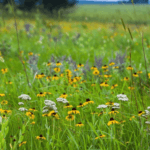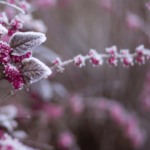
Beautiful flowers gardenia Plants For Your homes

Climate change and water scarcity are big challenges. Using drought tolerant shrubs and low-water garden solutions is key. These plants need little water and care, making your garden beautiful and efficient.
Studies show up to 70% of plants sold are drought-tolerant. This includes plants like the panicle hydrangea and flowering quince. They look great and can handle tough conditions. Adding drought tolerant shrubs to your garden cuts down water use without losing beauty.
Drought-resistant bushes need half the water of regular plants. They fit any garden, from sunny to shady spots. Plants like mapleleaf viburnum and winterberry add color all year while saving water.
Drought tolerant shrubs bring many benefits to your garden. They save water and are easy to care for. These plants are made to thrive in dry places, making them great for eco-friendly gardens.
Drought tolerant shrubs are great at saving water. They need little extra water once they’re settled. This is perfect for areas with little water or water limits.
Using these shrubs can cut down your water use and bills. The Los Angeles County Waterworks District No. 29 says drought-tolerant plants can save hundreds of gallons of water a year for a single home.
These shrubs also need less care. They grow well in dry conditions and poor soil. They’re less likely to get sick or attract pests, so you don’t need to use chemicals.
With drought tolerant shrubs, you’ll spend less time on gardening. You can enjoy your garden more without the hassle.
Drought tolerant shrubs are tough. They can handle long droughts, strong sun, and extreme temperatures. They have deep roots to find water deep in the soil.
They also have special leaves to lose less water. This makes them perfect for a garden that can handle tough weather.
Choosing drought tolerant shrubs makes your garden water-smart and easy to care for. It’s good for the planet and helps local wildlife. Start your dry climate garden with plants like Arctotis and Lavandula for a beautiful, sustainable space.
When picking drought-tolerant shrubs for your garden, think about a few key things. Look at your hardiness zone, sun exposure, and soil type. This helps pick the best shrubs that will not only live but also make your garden look great.
Hardiness zones are very important. They tell you which plants can handle your area’s weather. For instance, Perovskia (Russian sage) does well in zones 4-9. Leptospermum (Tea Tree) likes zones 9-10. Picking shrubs that fit your zone ensures they’ll do well in your garden.
How much sun your garden gets is also key. Some shrubs, like Cistus (rock rose), love full sun and can handle zones 6-9. Others, like Trachelospermum jasminoides (star jasmine), do well in partial shade and zones 8-10. Also, most plants prefer soil that drains well, so check your soil before choosing.
Blue mist shrubs are drought-tolerant and sun-loving, known for their aromatic foliage and stunning late summer flowers.
While it’s important to choose functional shrubs, don’t overlook their looks. Flowering shrubs like Buddleja (butterfly bush) have gorgeous flowers and come in different sizes. Shrubs with unique leaves, like heavenly bamboo or ninebark, add texture and color to your garden.
By thinking about these factors and picking the right shrubs, you can have a beautiful, easy-to-care-for garden. It will be full of stunning, drought-resistant plants.
Choosing the right plants for a low-water garden is crucial. These drought-resistant shrubs not only survive in dry conditions but also beautify your landscape. In Alabama’s 2007 drought, where temperatures hit over 100°F, these plants showed their strength and beauty.
Panicle hydrangea is a lush, hardy shrub that blooms in summer with white flowers. Even in extreme heat, it continued to bloom and keep its leaves. It’s great for USDA hardiness zones 3 to 8, fitting many gardens well.
Flowering quince brightens the garden in late winter with vibrant blooms. It lost its leaves in the 2007 drought’s peak heat. But, it grew new foliage in the fall, showing its strength.
Mapleleaf viburnum shines in dry shade with white flowers and colorful berries. In the 2007 drought, it grew well, even in shade. Nannyberry viburnum, another hardy plant, can grow up to 16 feet tall in zones 2–8.
Winterberry stands out in wet or dry soil with lasting berries. It performed well in both conditions during the 2007 drought, keeping its berries all season.
Heavenly bamboo shows off year-round with white flowers and red berries. It stayed vibrant and colorful in the 2007 drought without water. It thrives in zones 5–9 and grows 3 to 6 feet tall and wide.
Other drought-tolerant shrubs include glossy abelia and American beautyberry. Glossy abelia thrived in the 2007 drought and prefers less water. American beautyberry wilted but quickly recovered with water.
Drought-tolerant shrubs are known for being easy to care for. They still need the right care to grow well. Focus on watering, pruning, fertilizing, and mulching to keep them healthy.
Watering is key. Water deeply but not too often. This helps the roots grow deep, making the shrubs more drought-resistant. Water once or twice a week, depending on the weather and plant needs. Shallow watering can harm the roots.
Pruning is also important. It keeps the shrubs looking good and growing well. Prune in late winter or early spring to remove dead or damaged parts. This varies by plant type, so check what’s best for yours.
Fertilizing should be done carefully. These plants often thrive in poor soil and don’t need much fertilizer. Over-fertilizing can make them grow too much and need more water. If you must fertilize, use a slow-release, low-nitrogen fertilizer in early spring.
Mulching helps a lot. It keeps the soil moist, stops weeds, and keeps the temperature right. Use organic mulch like bark chips or leaves. Keep it a few inches from the stems to avoid rot. A 2-3 inch layer is enough to keep the soil moist.
Using drought-tolerant shrubs in xeriscaping is smart. Xeriscaping means choosing plants that don’t need much water. By mixing these shrubs with other low-water plants, you get a beautiful, water-saving garden.
For a low-water landscape, try using gravel or rock mulch instead of lawns. Add patios and walkways for hardscaping. Use drought-tolerant ground covers to fill gaps. With the right care, your drought-tolerant shrubs will make your garden beautiful and water-efficient, even when it’s dry.
Adding drought-resistant shrubs to your garden is a smart move. It helps with water conservation and keeps your garden looking good with less work. You can pick from many plants like Ninebark, Yucca, and Abelia that look great and save water.
To make sure your shrubs do well, plant them at the right time and water them deeply. Mulching your soil helps it hold water better. Also, using rainwater and using less water overall is key to a green garden.
Choosing drought-tolerant plants and using smart gardening tips can make your garden beautiful and water-friendly. This is especially good now because more people are looking for ways to save water in gardening. Adding these plants to your garden can make it beautiful and water-efficient all year.




